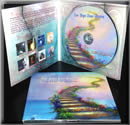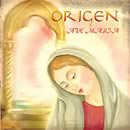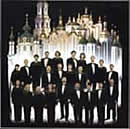- HOME
- CLASSICAL INSTRUMENTAL MUSIC
- PIANO MUSIC
- RELAXATION MUSIC
- STRESS RELIEF MUSIC
- BACKGROUND MUSIC
- INSTRUMENTAL MUSIC
- NEW AGE MUSIC
- FOLK MUSIC
- MUSIC SHOP
- FREE MP3 DOWNLOAD
- VIDEOS
- ROYALTY FREE MUSIC
- FREE MUSIC FOR YOUTUBE
- NEW ROCK / POP MUSIC
- FREE ELEVATOR MUSIC
- SMOOTH JAZZ MUSIC
- SPANISH GUITAR MUSIC
- BACKING TRACKS
LIST OF FREE VIOLIN SHEET MUSIC L'Abeille by Franz Schubert Vocalise, Op. 34 No. 14 by Sergei Rachmaninoff Caprice #24 in A minor by Niccolo Paganini 16 violin duos by Leopold Mozart Salut D'Amoure by E.Elgar Sonata #5 op.5 by A.Corelli Adagio by T.Albinoni Sonata #1 in G minor by A.Vivaldi
SIGN UP FOR ORIGEN MUSIC NEWSLETTER
and get access to Free MP3 Downloads |
Free Violin Sheet Music Sonata #5 op.5 by A.Corelli Click the title to open, print or download sheet music Be sure you have the Adobe Reader application installed on your computer. This allows you to open, print and download worship sheet music files whether you're online or offline. You can download Adobe reader for free directly from the Adobe website. Click here for help if PDF file do not open correctly. Links to our free sheet music library: Printable sheet music Free piano sheet music More sheet music for piano Bach sheet music for piano Free violin sheet music Free guitar sheet music Free clarinet sheet music Canon in D sheet music Free Christian sheet music Free worship sheet music Free sheet music home |
Arcangelo Corelli was born at Fusignano, Romagna, in the current-day province of Ravenna. Little is known about his early life. His master on the violin was Giovanni Battista Bassani. Matteo Simonelli, the well-known singer of the pope’s chapel, taught him composition. His first major success was gained in Paris at the age of nineteen, and to this he owed his European reputation. From Paris, Corelli went to Germany. In 1681 he was in the service of the electoral prince of Bavaria; between 1680 and 1685 he spent a considerable time in the house of his friend and fellow violinist-composer Cristiano Farinelli (believed to be the uncle of the celebrated castrato Farinelli).
In 1685 Corelli was in Rome, where he led the festival performances of music for Queen Christina of Sweden and he was also a favorite of Cardinal Pietro Ottoboni, grand-nephew of another Cardinal Pietro Ottoboni who in 1689 became Pope Alexander VIII. From 1689 to 1690 he was in Modena; the Duke of Modena was generous to him. In 1708 he returned to Rome, living in the palace of Cardinal Ottoboni. His visit to Naples, at the invitation of the king, took place in the same year.
The style of execution introduced by Corelli and preserved by his pupils, such as Francesco Geminiani, Pietro Locatelli, and many others, was of vital importance for the development of violin playing. It has been said that the paths of all of the famous violinist-composers of 18th-century Italy lead to Arcangelo Corelli who was their "iconic point of reference." (Toussaint Loviko, in the program notes to Italian Violin Concertos, Veritas, 2003)
However, Corelli used only a limited portion of his instrument's capabilities. This may be seen from his writings; the parts for violin very rarely proceed above D on the highest string, sometimes reaching the E in fourth position on the highest string. The story has been told and retold that Corelli refused to play a passage which extended to A in altissimo in the overture to Handel’s oratorio il Trionfo del Tempo e Disinganno (premiered in Rome, 1708), and took serious offense when the composer played the note.
Nevertheless, his compositions for the instrument mark an epoch in the history of chamber music. His influence was not confined to his own country. Johann Sebastian Bach studied the works of Corelli and based an organ fugue (BWV 579) on Corelli's Opus 3 of 1689.
Musical society in Rome also owed much to Corelli. He was received in the highest circles of the aristocracy, and for a long time presided at the celebrated Monday concerts in the palace of Cardinal Ottoboni.
Corelli died in possession of a fortune of 120,000 marks and a valuable collection of pictures, the only luxury in which he had indulged. He left both to his benefactor and friend, who generously made over the money to Corelli's relatives. Corelli is buried in the Pantheon at Rome. One can still trace back many generations of violinists from student to teacher to Corelli. His compositions are distinguished by a beautiful flow of melody and by a mannerly treatment of the accompanying parts, which he is justly said to have liberated from the strict rules of counterpoint.
In 1685 Corelli was in Rome, where he led the festival performances of music for Queen Christina of Sweden and he was also a favorite of Cardinal Pietro Ottoboni, grand-nephew of another Cardinal Pietro Ottoboni who in 1689 became Pope Alexander VIII. From 1689 to 1690 he was in Modena; the Duke of Modena was generous to him. In 1708 he returned to Rome, living in the palace of Cardinal Ottoboni. His visit to Naples, at the invitation of the king, took place in the same year.
The style of execution introduced by Corelli and preserved by his pupils, such as Francesco Geminiani, Pietro Locatelli, and many others, was of vital importance for the development of violin playing. It has been said that the paths of all of the famous violinist-composers of 18th-century Italy lead to Arcangelo Corelli who was their "iconic point of reference." (Toussaint Loviko, in the program notes to Italian Violin Concertos, Veritas, 2003)
However, Corelli used only a limited portion of his instrument's capabilities. This may be seen from his writings; the parts for violin very rarely proceed above D on the highest string, sometimes reaching the E in fourth position on the highest string. The story has been told and retold that Corelli refused to play a passage which extended to A in altissimo in the overture to Handel’s oratorio il Trionfo del Tempo e Disinganno (premiered in Rome, 1708), and took serious offense when the composer played the note.
Nevertheless, his compositions for the instrument mark an epoch in the history of chamber music. His influence was not confined to his own country. Johann Sebastian Bach studied the works of Corelli and based an organ fugue (BWV 579) on Corelli's Opus 3 of 1689.
Musical society in Rome also owed much to Corelli. He was received in the highest circles of the aristocracy, and for a long time presided at the celebrated Monday concerts in the palace of Cardinal Ottoboni.
Corelli died in possession of a fortune of 120,000 marks and a valuable collection of pictures, the only luxury in which he had indulged. He left both to his benefactor and friend, who generously made over the money to Corelli's relatives. Corelli is buried in the Pantheon at Rome. One can still trace back many generations of violinists from student to teacher to Corelli. His compositions are distinguished by a beautiful flow of melody and by a mannerly treatment of the accompanying parts, which he is justly said to have liberated from the strict rules of counterpoint.
DOWNLOAD THIS SONG FOR FREE
You won't find this song anywhere on the Internet.
FEATURED ALBUMS
|
|
FREE PRINTABLE VIOLIN SHEET MUSIC ONLINE




